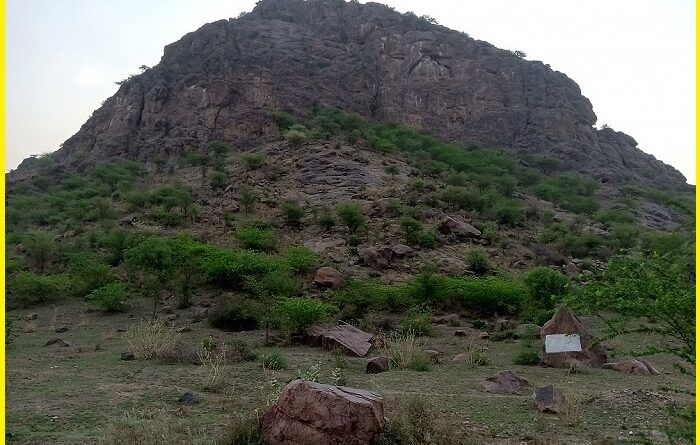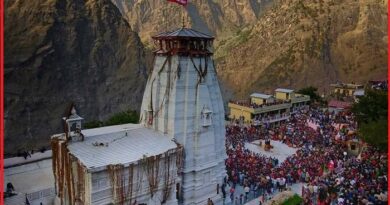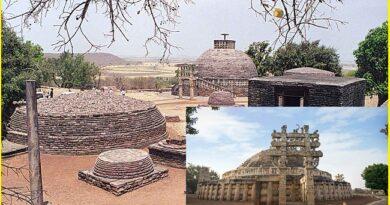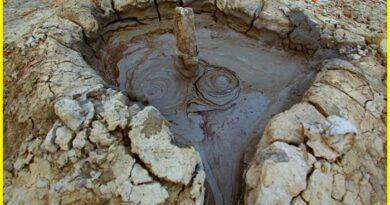Tosham Hills Range-Ramnants of an extinct volcano and a Popular Hill Station
Tosham Hills Station
Tosham Hill Station is located on the foot of the Aravalii mountain range in the Bhiwani district of Haryana India. The hill has several historic places, such as forts, carvings, paintings, temples, and sacred ponds, dating as far back as 1800 years. The hill range is part of the Aravalli mountain, the oldest mountain range of India, located at and in the area around Tosham town, with an average elevation of 207 meters. The rocks exposed in Tosham hills are part of the Alwar group of the Delhi supergroup and Malani igneous suite of rocks and have been dated at 732 Ma. year back. Tosham hill volcano-Tosham Hill station in Aravalli Craton is a remnant of the outer ring of a fallen chamber of an extinct volcano. It covers the hills at Tosham, Khanak, and Riwasa as well as the small rocky outcrops at Nigana, Dulehri, Dharan, Dadam, and Kharkari Makhwan. Among these, Khanak Hill is the largest in the area and the tallest. It is an important biodiversity area within the “western-southern Haryana” spur of the Northern Aravalli leopard wildlife corridor.
Geology
The main Tosham hills is an extinct volcano that erupted sometime 732 Ma Year back. The geologic province of Khanak-Tosham and others is a narrow oval-shaped ring dike of eroded extinct volcanoes. The periphery of the collapsed caldera is roughly 16 kilometers in diameter on its longest Khanak to Nigana and 8 kilometers on its narrower Dadam to Tosham. This sub-surface ring dyke is now buried under the recent soil. Much of the area to the west of the ring dyke is covered with Aeolian sand flown from the Thar Desert. The remaining area is covered under sedimentary alluvium soil of the Harka River of the Ghaggar-Hakra River system (paleo Sarasvati River).
Also read- A Geological Wonderland- The Vermilion Cliffs wilderness and National Monument
Tosham Igneous Complex
Tosham Igneous Complex has 3 main hills (Khanak, Tosham, and Riwasa) and several other smaller rocky outcrops, mainly around the ring dyke.
Tosham hills-
The main Tosham hill is the second largest hill in the range. This hill has ancient rock inscriptions and rock paintings, paleo-eroded rocky glacial channels and water cascades with hilltop lakes. Tosham hill station consists of a quartz porphyry ring dyke, felsite, welded tuff, and muscovite biotite granite. The country rocks (Archean Bhilwara basement rocks) native to the area are quartzite with chiastolite belonging to the Delhi Supergroup. Tosham Hills is the source of primary tin as well as Tungsten and copper but is economically not viable. The granites and granite porphyries are high heat-producing types with a high abundance of potassium, uranium, and thorium, a sign of radioactivity. The highest heat flow in India is recorded from this area.
Khanak hill-
Khanak Hill is the largest and tallest in the range, followed by neighboring Tosham Hill, Nigana Khurd, Riwasa, Dulehri, Dharan, Dadam, etc in the order of decreasing size. These hills are mainly composed of granite porphyries. Riwasa Hill- is mainly composed of granite porphyries.
Tosham Hills –Sulfur ponds
Tosham Hills station includes several holy ponds inside the caves, namely Pandu Teerth Kund, Surya Kund, Kukkar Kund, and Gyarasia/Vyas Kund. Water in these kunds in various caverns contains sulfur which is considered sacred by the devotees and pilgrimages as it heals skin diseases.

Pandu Tirath-The Pandu Tirath is considered so sacred that some of the neighboring villages deposit the ashes of their dead in it instead of taking them to the Ganges. Surya Kund- The Surya Kund is one of many ponds found in the caverns of Tosham Hill. It is considered sacred.




Pingback: Horsley Hills India-An Attractive Hill station in Andhra Pradesh - Geotourism